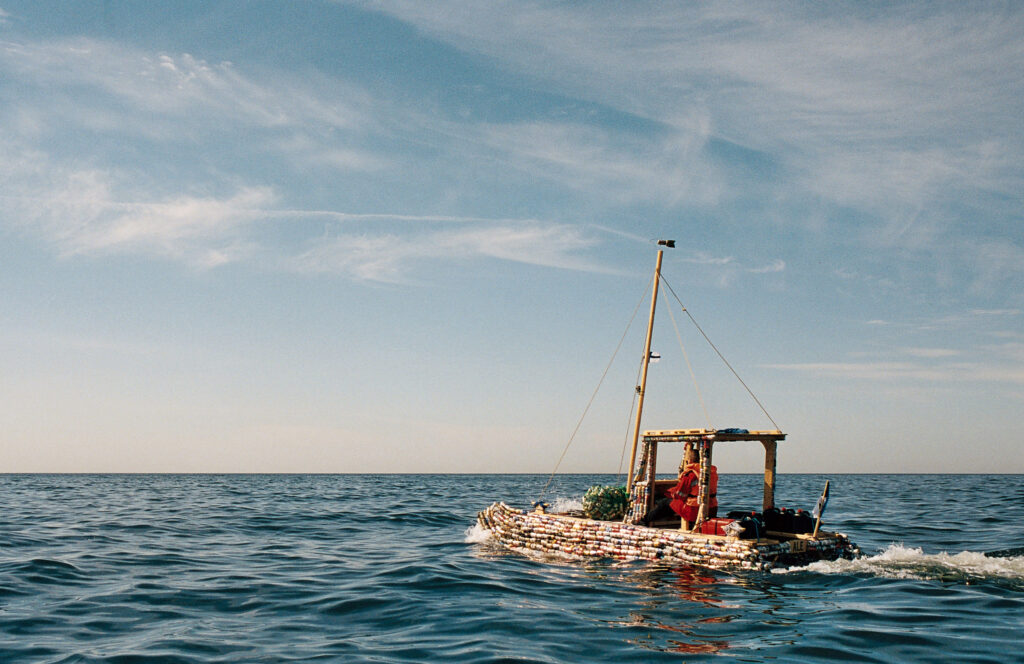
Karel Koplimets (1986) is a photographer, video and installation artist, working with notions like urban space, fear, paranoia, prejudice and criminality. In his latest projects, Koplimets explores travelling and migration caused by economic and geopolitical realities, expressed in phenomena like shopping tourism and commuting. One of the most notable traits of Koplimets’ work is the psychological aspect – his large scale installations influence the viewers’ sense of space.
Together with artists Sigrid Viir and Taaniel Raudsepp, Koplimets initiated the art project OÜ Visible Solutions (2010–ongoing), investigating the relationship between art and economy. Their works analyse various aspects of the creative economy, for example, the situation where artists are also entrepreneurs, making art into merchandise.
In several of his projects, Koplimets has blended the everyday with fiction, creating works where the fragile line between reality and imagination is ambivalent or blurred. His “Suburbs of Fear” (2012) explores fears related to urban environment. The artist was interested in residential areas and how people consider some of those areas to have a poor reputation. “Case No 12. Kalamaja” (2016), exhibited at Draakoni Gallery, focused on gentrification and paranormal phenomena occurring around the artist’s neighbourhood. Koplimets shifts the viewer’s sense of space by creating a tense and frightening atmosphere in his photos. The video installation in the gallery’s basement centred on an appearing and disappearing human figure and the resulting anxiety in the viewer.
In projects “Case No 11. TALSINKI” (2016/1017) and “Case No 13. Waiting for the Ship of Empties” (2017) Koplimets was looking at migration between Estonia and Finland. The first to be observed were cruise ship passengers, both tourists and workers, who often commute to their job on the other side of the Baltic Sea. Among the cruise tourists there is a considerable amount of people visiting Estonia to buy cheap alcohol. So the economic relations between Finland and Estonia should be viewed from two sides: tourists contribute to the Estonian economy, and Estonians working in Finland enliven the economy there. The artist’s interest in shopping tourism and commuters was also evident in “Case No 13. Waiting for the Ship of Empties”. In Helsinki, Koplimets built a raft from the empties of various alcoholic drinks with Estonian tax stamps, and used it to sail to Estonia. After successfully landing in Tallinn the raft of empties together with a video installation about the journey was exhibited in Kumu at the exhibition “The Travellers. Voyage and Migration in New Art from Central and Eastern Europe” (2017).
Karel Koplimets studied photography in the Estonian Academy of Art (BA, 2009; MA, 2013). In 2007 and 2008 he studied in Prague at FAMU (with Viktor Kolař). He has participated in a group exhibition at the Riga International Biennial of Contemporary Art (2018) and has been nominated for the Köler Prize (2013). His works belong to the collections of Kumu Art Museum, Tartu Art Museum, Kiasma, Contemporary Art Museum, Estonia, and Musée de l’Elysée (Switzerland). In 2019 he was awarded the Eerik Haamer Art Prize. Karel Koplimets is one of the laureates for the artist’s salary 2020–2022.